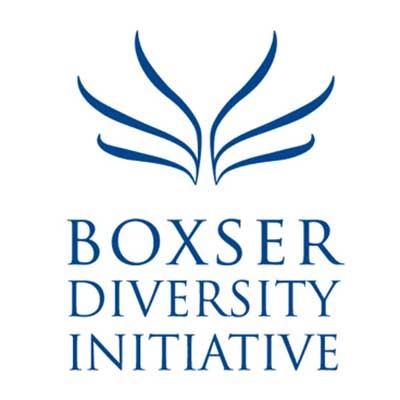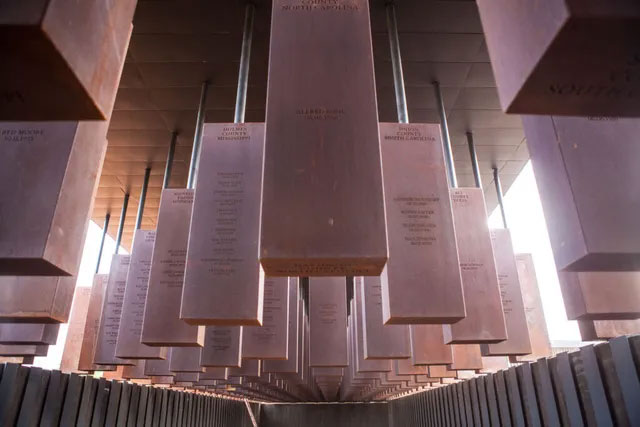Originally posted in the Herald-Tribune by columnist, Carrie Seidman
In 2016, just as she was completing a city-contracted research project into the history of Sarasota’s Black community, Vickie Oldham of Newtown Alive received a last minute invitation to the annual dinner of Legal Aid of Manaso. The keynote speaker was Bryan Stevenson, a lawyer and social activist now well known for his 2014 memoir-turned-2019 movie, “Just Mercy,” but at the time, unfamiliar to Oldham.
In his address, Stevenson talked about the legacy of lynchings in the United States, and his efforts – through the nonprofit Equal Justice Initiative he founded in the ’90s to assist with death penalty defenses – to establish a National Memorial for Peace and Justice in Montgomery, Alabama. The memorial and museum would commemorate the (by conservative estimates) nearly 4,000 people who were lynched in the South from 1877 to 1950.
“I thought, wow, we’re about to conclude this research report the city asked for and I hadn’t even thought about whether lynchings had happened in this area,” Oldham recalls. “It had never come up in any of my research. That forced me to start asking more questions.”
A committee was established to research local lynchings, but the project fell apart after the team leader left for a new job. Dan and Litten Boxser, whose Boxser Diversity Institute fosters tolerance and understanding of all groups, regardless of race, religion or gender identity, were reluctant to let the idea go.
The couple visited the Montgomery museum just after it opened in 2018, and were devastated by the display of 800 six-foot monuments, each representing the victims of racial terror in a particular county. Seeing the names of six lynching victims from Manatee County chiseled on one (Sarasota was a part of Manatee County until 1921) was especially emotional.
“It was harrowing,” says Litten Boxser, who likened it to visiting Holocaust museums and concentration camps in Europe. “It’s that same sorrowful feeling you just cannot shake.”
They learned of EJI’s effort to encourage the counties represented there to document their lynching histories, gather soil from the actual lynching sites and build community support for a local memorial. In return, EJI promised to provide a replica marker to each county strongly committed to using it both to both memorialize those lost and educate present and future generations about this tragic chapter in American history.
With Oldham and a number of other local advocates, the Boxsers established The Sarasota and Manatee Community Remembrance Project Coalition (SMCRPC). Hope Black, tasked with documenting the local tragedies, began with a thesis project by University of South Florida – St. Petersburg student Hailey Erin Praught entitled “A Bare Bones History: Lynching in Manatee County” that contained the six names.
Confirming anything was arduous, Black says, because “newspapers in Florida at that time kept the ‘dirty little secret.’” But eventually she crafted stories about the six individuals from Manatee County, as well as sketchier details on a seventh. (Oldham says there were “absolutely” many others that we’ll never know about.)
Buoyed by the city’s recent agreement to move the historic Leonard Reid house to Newtown to become the first home of the Sarasota African American Cultural Coalition – a “no brainer” location for an eventual monument, Dan Boxser says – members of the coalition recently began soliciting the broad-based support from local organizations and individuals required by the EJI.
To date about 50 organizations and more than 150 individuals have signed on to the effort, including, most recently, the City of Sarasota. The commitment requires no financial donation, and pledges can be submitted to dan@boxser.com over the next month, at which time the coalition hopes to submit its application to the EJI.
“We would like EJI to be bowled over by the support,” said Boxser, who especially urges residents and organizations in Manatee County to make a pledge. “All they have to do is send something in writing saying they support the lynching memorial project. We’re not asking for money, just their support.”
If EJI accepts the proposal, a preliminary marker would be presented during a ceremony at the SAACC and the soil-gathering project could begin. At an undetermined date in the future, the replica marker would be placed outside the cultural center.
As to whether Sarasota is ready for a lynching memorial, coalition member Judge Charles Williams, who admits to being “embarrassed” that many of the lynchings occurred on courthouse grounds, said he certainly hopes that is the case.
“There will be people who say, ‘Why do we need a memorial to lynching? It’s an ugly part of American history,’” he acknowledged. “We like to celebrate our history, but often not the darker parts. But I’d like to think we’re ready for an honest discussion, understanding that this is part of American history and you can’t separate it.
“I see this as a real opportunity to move forward on these delicate issues and discussions about race. There are still real impacts in the communities where these lynchings occurred. You have to have a reconciliation of these things.”


